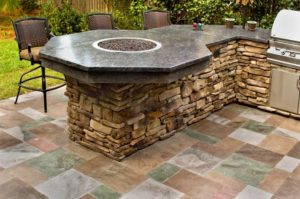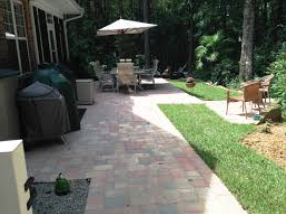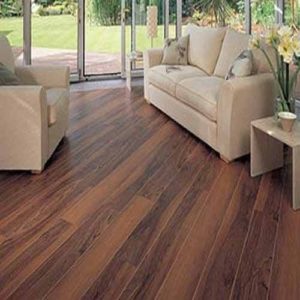Most Recent Articles
Steps to Repairing a Crack in Your Home Foundation
Your foundation supports the entire building. Hence, the need to ensure it’s always in proper condition. When cracks develop in the foundation, they compromise the safety and integrity of your home. Proper and timely foundation repairs prevent further deterioration, which may necessitate costly repairs. Here are the steps to fix cracks in your foundation.
Locate the Foundation Crack
The first step is to locate the crack in the foundation. That way, you’ll know the best approach to fixing it and set up your working area.
Inspect the Cracks
Foundation cracks can occur for various reasons. To repair a crack correctly, you must investigate it to know the cause. Maybe the settling of the ground around the foundation is the reason for the crack. Also, water can infiltrate your foundation walls, causing expansion and contraction of the concrete due to temperature changes. Such factors can cause stress and weaken the concrete in your foundation. Addressing such issues when repairing a crack in your foundation is the best way to ensure a long-lasting solution.
Excavate the Ground
After inspecting the crack, excavate the ground to find out its entirety. Moreover, the foundation repair experts will have better access to the crack when you dig a large hole next to the foundation.
Prep the Crack for Repair
Repairing large foundation cracks requires you to clear the loose materials, including cracked or broken bits of concrete, debris, and dust. Use a stiff wire brush or a screwdriver to remove them. Also, you may have to undercut the edges to widen the crack slightly. That way, the patch will have sufficient surface area to adhere without sipping out.
Apply the Repair Material
Applying cement to the crack is the most prevalent method of repairing foundation cracks from the outside. The crack becomes invisible from the exterior once the cement dries. However, you may use other methods, such as injecting a polyurethane or epoxy filler into the groove. Once it has dried, you can smooth the excess material before painting over it to achieve an even finish. Also, you can use a trowel or caulk gun to apply a sealant to the crack. Again, smooth the excess sealant and let it dry before completing the repair by painting over it.
Waterproof the Foundation
Once you’ve filled and sealed the crack, apply the correct waterproofing material. Typically, a waterproofing material is a vapor barrier that prevents water from damaging the part you’ve repaired. Also, it prevents water from seeping into the basement.
Fill the Hole
After repairing the foundation, you can fill the hole with the excavated soil. However, allow the repaired part to dry before painting or filling the hole.
Take Preventative Measures
Taking preventative measures is an excellent way to prevent foundation cracks. For example, ensure your house always has properly functioning gutters and downspouts. Also, avoid growing trees and shrubs close to the foundation. Other measures that may preserve the integrity of your foundation and the entire building include the following:
- Grading away from your foundation to create a gentle slope to direct rainwater away from the building.
- Installing landscaping features, such as flowers to help with soil moisture regulation.
- Monitoring soil moisture levels to avoid excessive saturation or dryness, which can make soil expand or shrink and stress the foundation walls.
While repairing a crack in your foundation may seem relatively simple, it requires skills and experience. Therefore, it’s reasonable to work with professional foundation repairers instead of attempting to do the job alone. A reputable foundation repair contractor has the necessary skills, tools, and experience to provide a lasting solution. Also, they may perform repairs from the inside and outside, depending on the crack’s severity and ease of access.
These helpful steps were brought to you by the professionals at repairfoundationwinnipeg.com
Read MoreConcrete Tiles For Your Outdoor Kitchen & Patio
Boosting the aesthetics of a home entails bringing the exteriors and interiors at par. Outdoor and patio decoration is crucial for anybody that hosts parties or receives visitors frequently. Flooring is one of the major aesthetic aspects of an outdoor kitchen or patio. And concrete tiles can enhance the outdoor kitchen and patio appearance immensely.
Better Versatility
Concrete tiles come with more design options and greater versatility. This allows you more freedom when it comes to decorating your outdoor kitchen and patio. You can install concrete tiles in your outdoor kitchen and patio as a way of exercising your creativity. That’s because you can choose from imprinted patterns and cutout options among others. Thus, you no longer have to limit yourself to the standard, square concrete tiles. Pick concrete tiles that enable you to add character and personality into your outdoor space.
More Color Palettes
 Customize your outdoor kitchen and patio to match or blend with the other parts of your space. Concrete tiles come with a variety of colour palette that ranges from bright to soft shades. This means you have more freedom when it comes to selecting the colours that match the theme of your outdoor décor.
Customize your outdoor kitchen and patio to match or blend with the other parts of your space. Concrete tiles come with a variety of colour palette that ranges from bright to soft shades. This means you have more freedom when it comes to selecting the colours that match the theme of your outdoor décor.
Easy Maintenance
The patio and outdoor kitchen are some of the places where you want to entertain guests. As such, they should look great always. Concrete tiles have easy maintenance which makes them ideal for outdoor and patio flooring. Since outdoor kitchen and patio flooring will be exposed to grime, dust and other elements, it should be easy to maintain. The easy maintenance of concrete tiles makes them ideal for these spaces.
Environmental Friendly
Concrete tiles are eco-friendly. They are made of natural products like stone and sand. What’s more, concrete tiles are energy efficient and they maintain air quality. Additionally, the beauty of concrete tiles eliminates the need to install extra floor coverage.
Maintenance Tips for Concrete Tiles
Once you’ve installed concrete tiles in your patio or outdoor kitchen, it’s important to ensure their proper maintenance.
Here are tips to help you maintain outdoor kitchen and patio concrete tiles:
 Shine your tiles and polish them when exposed to abrasive dust. Use a microfibre mop to get rid of dust from your concrete tiles on a regular basis.
Shine your tiles and polish them when exposed to abrasive dust. Use a microfibre mop to get rid of dust from your concrete tiles on a regular basis.- When you use a wet mop, make sure that the mop and water are clean. An automatic scrubber can also yield better results because it has a non-abrasive pad that is also effective in large areas’ cleaning.
- Avoid cleaning concrete tiles with water only when wet mopping them. That’s because water does not remove all dust particles from the floor. This can lead to abrasion over time. Therefore, mix water and natural cleaner to disperse dust particles. Such a mixture makes mopping dust particles away easier.
- If something gets spilled on a concrete tiles floor, don’t leave it on the floor for long. Spilt oil and other liquids should be removed from the floor immediately to prevent their absorption which can lead to discolouration of the concrete tiles.
Concrete tiles are strong, reasonably priced and durable. This combined with their availability in different textures and colours makes them an ideal choice for outdoor kitchen and patio for most people.
Thanks to our blog sponsors at Tile Winnipeg for their support. We appreciate getting quality content written for our readers.
Read MoreDecorative Line & Symbol Painting for Your Hardscape
In interior design, there are basic design elements that must be used for excellent results to be achieved. These include line and symbol painting. It’s important to note that when it comes to interior design, some parts that seem subtle can turn out to be the most crucial. For instance, some lines seem like simple shapes that may be used in the background or foreground lettering. However, they can also be the most dominant elements of art in a design.
 Essentially, lines and symbols in a hardscape are not painted the same. Some are thick while others are not. However, each line or symbol creates a specific meaning and impression. So, before you decide on the decorative line or symbol painting for your hardscape, know the impression or meaning that you want to create.
Essentially, lines and symbols in a hardscape are not painted the same. Some are thick while others are not. However, each line or symbol creates a specific meaning and impression. So, before you decide on the decorative line or symbol painting for your hardscape, know the impression or meaning that you want to create.
Decorative Lines
A decorative line is a simple shape that connects two points. A line is simply made of one stroke. In painting, a line can be vertical, horizontal, or have any orientation that the painter or artist prefers. It’s also possible to have multiple lines intersecting or connecting to form purposeful groupings or patterns. What’s more, there are no rules that govern how short, long, thin, or thick a line should be. A line can also be curved or straight. Basically, a line is a movement sense since it connects points. A line can make the human eye move from one point to another in a single motion. Designers accomplish this in ways that seem subtlety or obvious. Nevertheless, decorative lines are used for purposes of embellishing a text, an object, or a design element. And they are mostly used with other design elements. For instance, a line can be used to underline a text.
Symbol Painting
 In painting, a symbol is anything recognizable that represents or stands for something else. Essentially, a symbol can represent or stand for an ideal, a concept, or anything that may be hard to paint or draw. For instance, a symbol can be used to represent or stand for hope or love. Painters such as Sandman Painting, a painting company in Canada, use symbols from different places including nature. Examples of symbols from nature include the sun and a flower. There are also man-made object that act as symbols in painting. These include a color that is used to represent something else. In most cases, symbol painting for hardscape is used to express personality, to document something, or to make understanding easier. For instance, symbolic painting is used to enable children to learn and understand concepts. This is very common for kids that are about 3 years old. That’s because at this age, children start to comprehend and create symbols as a way of telling stories.
In painting, a symbol is anything recognizable that represents or stands for something else. Essentially, a symbol can represent or stand for an ideal, a concept, or anything that may be hard to paint or draw. For instance, a symbol can be used to represent or stand for hope or love. Painters such as Sandman Painting, a painting company in Canada, use symbols from different places including nature. Examples of symbols from nature include the sun and a flower. There are also man-made object that act as symbols in painting. These include a color that is used to represent something else. In most cases, symbol painting for hardscape is used to express personality, to document something, or to make understanding easier. For instance, symbolic painting is used to enable children to learn and understand concepts. This is very common for kids that are about 3 years old. That’s because at this age, children start to comprehend and create symbols as a way of telling stories.
Design artists use symbol painting to extend their inner workings. They use symbols illustrate ideas and explore their imaginations. Today, you can find great works of art that are part of the symbol painting of the hardscape of artists. Some of these works have beautiful illustrations that depict the art history. They feature symbols like the moon, the sun, shell, dogs, cats, ladder, mirrors, and books among others. All these symbols are used in painting to ensure that the final hardscape conveys a clear, specific message.
Read More5 Trending Paving Ideas for a Modern Home
Because even the smallest of detail can lift your ordinary paver to another league!
Patios and pavements matter! Curved or straight, modern or contemporary, it is a pavement that traverses the garden, enriches the landscape, and adds grace to your patio. If you are looking for some fresh ideas to add appeal to your outdoor space, you’ve just landed to the right place. From old school style to the trendiest contemporary designs for your pavement, here are some stunning paving ideas to spark your imagination. Take heart these ideas and give your outdoor space a facelift.

Be innovative with the stones – Looking for an easy way to revamp your pavement? Stepping stones pathways are a fun way to add a unique design to your outdoor landscape. Placing some granite curb stones across the pathway will not only reduce the wear on the grass but also provide a stable surface for walking.
Play with the patterns – Take the idea of stepping steps one level up and make a random or a checkerboard pattern of the pavers across the walkway. Adding the stones to the angle of 45 degrees is a simple and creative way to add to the aesthetics of your pavement.
Try free styling – Modern pathways don’t need to follow a symmetrical structure. You can create a pavement using pebbles, pavers, or cobblestones that take you across the way. Make use of the innovative patterns like swirly, wavy, and zigzag, which will give you a freestyle path with a minimalist effort.

Try the staircase style – Are you tight on a budget but craving for a terra ce or a staircase style as the entrance to your patio? Ace it by covering the pathway with the combination of grass steps and sturdy.
Use a little DIY idea – By using the same stone creatively in different ways, you can easily achieve a mosaic-paved area. No, not mosaic infill! Use pebbles, limestone, concrete slabs, or marbles, make a contrast and lay them down on the pathway. The shades may vary a little but ultimately it will give you a Mediterranean styled pathway. When it comes to a patio or a garden paver designs, there is a huge variety of patterns
Read MoreHardscaping Your Home- The Benefits
 Since hardscape features are not living organisms, they provide a means of increasing property value and the attractiveness of the property without requiring the same level of constant care and maintenance that lawns and gardens do. This makes an emphasis on hardscaping ideal for owners who do not have a lot of time to devote to lawn care, those who live in arid regions or in areas where water use is restricted, or those who wish to improve the value of their property but are not particularly inclined toward gardening.
Since hardscape features are not living organisms, they provide a means of increasing property value and the attractiveness of the property without requiring the same level of constant care and maintenance that lawns and gardens do. This makes an emphasis on hardscaping ideal for owners who do not have a lot of time to devote to lawn care, those who live in arid regions or in areas where water use is restricted, or those who wish to improve the value of their property but are not particularly inclined toward gardening.
 Hardscape features such as ornate benches or gazebos can be incorporated into an existing landscaping scheme to provide a degree of functionality, as well, giving visitors a place to relax and enjoy the scenery. Fountains and pools can improve the overall ambience of the property, creating a more calming and serene atmosphere, helping to drown out noise pollution and attract local fauna. Attractive stone walkways can be utilized, not only for their functionality, but to mask problem areas where grasses and other plants are slow to take hold. Fences and rock walls can provide wind barriers and improve privacy. Hardscaping also allows for features such as raised flower beds that can help to break up visual monotony. Take a look at how Driveway Repair Winnipeg adds value to any backyard, whether it’s walkways you are looking for or other ideas to enhance your property.
Hardscape features such as ornate benches or gazebos can be incorporated into an existing landscaping scheme to provide a degree of functionality, as well, giving visitors a place to relax and enjoy the scenery. Fountains and pools can improve the overall ambience of the property, creating a more calming and serene atmosphere, helping to drown out noise pollution and attract local fauna. Attractive stone walkways can be utilized, not only for their functionality, but to mask problem areas where grasses and other plants are slow to take hold. Fences and rock walls can provide wind barriers and improve privacy. Hardscaping also allows for features such as raised flower beds that can help to break up visual monotony. Take a look at how Driveway Repair Winnipeg adds value to any backyard, whether it’s walkways you are looking for or other ideas to enhance your property.Planning Your Kitchen Remodel
 There are several elements that go into the planning phase of your kitchen remodelling job. First, visualize what changes you want to make and how those changes will impact the rest of your kitchen as well as the rest of your home. If you’re doing a major remodel of your kitchen, you might want to visit other homes in your neighbourhood to see how current trends are running. Not that you have to do the same thing, but you want to keep the price of your home comparable to others in your neighbourhood and you want to realize a return on your investment should you decide to sell your home.
There are several elements that go into the planning phase of your kitchen remodelling job. First, visualize what changes you want to make and how those changes will impact the rest of your kitchen as well as the rest of your home. If you’re doing a major remodel of your kitchen, you might want to visit other homes in your neighbourhood to see how current trends are running. Not that you have to do the same thing, but you want to keep the price of your home comparable to others in your neighbourhood and you want to realize a return on your investment should you decide to sell your home.
Do Your Homework
 Today, it is easier than ever before to learn everything you need to know about your proposed project before you get started. From cost estimation to how much time your project will take, you can easily find out everything you need to know by looking online, reading books, and talking to others who have completed similar projects. Whether you’re tearing out your entire kitchen and starting from scratch or completing a weekend home improvement project, the information you need is at your fingertips. Planning a remodelling project also involves deciding whether this is something you can complete yourself or if you need to engage the services of a contractor or other kinds of help, such as an electrician or plumber. If you are going to do it all yourself, do you have the proper tools, experience, and skill level? Is there anything you need to learn how to do before you get started?
Today, it is easier than ever before to learn everything you need to know about your proposed project before you get started. From cost estimation to how much time your project will take, you can easily find out everything you need to know by looking online, reading books, and talking to others who have completed similar projects. Whether you’re tearing out your entire kitchen and starting from scratch or completing a weekend home improvement project, the information you need is at your fingertips. Planning a remodelling project also involves deciding whether this is something you can complete yourself or if you need to engage the services of a contractor or other kinds of help, such as an electrician or plumber. If you are going to do it all yourself, do you have the proper tools, experience, and skill level? Is there anything you need to learn how to do before you get started?
Professional Help
 The time to decide whether or not you need professional help in completing your kitchen remodelling project is before you ever get started, not in the middle of the job after your kitchen is completely torn apart. That’s why this planning phase is so important; you want as little in the way of surprises and distractions as possible. If you do need to hire a contractor or other professional, there are certain things you need to do in order to ensure things go smoothly. Contractors and other professionals in the industry are licensed, or they should be, and you want to make sure any professionals you hire have up to date, current, and active licenses. This is, perhaps, the most important part of the planning phase, ensuring your hire competent professionals. Once you have verified all license information, which you can do for free online, it’s time to check references. Once you’re satisfied that you’re dealing with a reputable professional, the negotiation process can start. Leave nothing to chance, insist on a contract and spell everything out, including price, date of completion, and who is responsible for getting the materials. It’s a tedious process, but proper planning before you begin your remodelling project will ensure a higher degree of success and far less headaches in the end.
The time to decide whether or not you need professional help in completing your kitchen remodelling project is before you ever get started, not in the middle of the job after your kitchen is completely torn apart. That’s why this planning phase is so important; you want as little in the way of surprises and distractions as possible. If you do need to hire a contractor or other professional, there are certain things you need to do in order to ensure things go smoothly. Contractors and other professionals in the industry are licensed, or they should be, and you want to make sure any professionals you hire have up to date, current, and active licenses. This is, perhaps, the most important part of the planning phase, ensuring your hire competent professionals. Once you have verified all license information, which you can do for free online, it’s time to check references. Once you’re satisfied that you’re dealing with a reputable professional, the negotiation process can start. Leave nothing to chance, insist on a contract and spell everything out, including price, date of completion, and who is responsible for getting the materials. It’s a tedious process, but proper planning before you begin your remodelling project will ensure a higher degree of success and far less headaches in the end.
Home Improvement- The Benefits of Wooden Flooring
 They’re affordable and come in a wide variety of styles and colours. They’re easy to install and maintain. They add value to your home, and maintain their value over time. They’re versatile enough to be the perfect backdrop to any decor. And to top it off, they help keep your home allergen and dust free. A natural wood floor is easily the best investment you can make in your home. Take a look at the benefits of natural wood flooring in your home! Whether your personal style leans toward a clean, contemporary design or the home feeling of a traditional Colonial style, wood floors fit right into the decor, and everything in between. Depending on the wood you choose, they can add to the open, airy feeling of a living room, warm a design based on steel and leather, or be the perfect background for a prized Oriental carpet. Dramatic and simple at the same time, wood floors can accent and complete the decor in any room in your home.
They’re affordable and come in a wide variety of styles and colours. They’re easy to install and maintain. They add value to your home, and maintain their value over time. They’re versatile enough to be the perfect backdrop to any decor. And to top it off, they help keep your home allergen and dust free. A natural wood floor is easily the best investment you can make in your home. Take a look at the benefits of natural wood flooring in your home! Whether your personal style leans toward a clean, contemporary design or the home feeling of a traditional Colonial style, wood floors fit right into the decor, and everything in between. Depending on the wood you choose, they can add to the open, airy feeling of a living room, warm a design based on steel and leather, or be the perfect background for a prized Oriental carpet. Dramatic and simple at the same time, wood floors can accent and complete the decor in any room in your home.
A new wood floor will add more value to your home than any other flooring option, including tile or wall-to-wall carpeting. And unlike other options, wood floors maintain their value over the years. When tile, vinyl flooring and carpets are looking worn, wood floors still retain their beauty. When they do begin to show wear, they don’t need to be replaced. Wood flooring can be refinished for a fraction of the cost of a new tile floor. It’s no wonder that ‘natural wood floors’ appear so often in real estate ads. Wood floors are a healthy choice. Many doctors recommend hardwood floors such as a way to help control animal and dust allergies. Carpets can trap dust, animal dander and mould spores, and serve as a breeding ground for dust mites and other common household allergens. Natural wood floors are easy to clean – sweeping and occasional vacuuming are all that it takes. Wood floors are a natural choice, made from a renewable resource. In many cases, wood flooring is made from ‘recovered’ wood, recycled from old ships, barns and other old wooden structures.
 There’s a common misconception that wood floors must be treated with kid gloves. In fact, wood floors are among the most durable of flooring options. That’s the simple reason that most gymnasium and auditorium floors are made with natural wood. It’s durable enough to stand up to heavy traffic with minimal care. Today’s polyurethane finishes and sealants make wood floors a good choice even in areas like bathrooms and kitchens. Wood floors are easy to care for. Daily dust-mopping or vacuuming is all that most floors need to stay beautiful and shiny. Polyurethane sealant will maintain a high gloss or soft sheen, while protecting the floor from moisture and spills. With all that going for them, why would you choose anything but a natural wood floor, such as a new for your new home or remodelling project? As you can see, wood is a natural choice for beauty, value and durability!
There’s a common misconception that wood floors must be treated with kid gloves. In fact, wood floors are among the most durable of flooring options. That’s the simple reason that most gymnasium and auditorium floors are made with natural wood. It’s durable enough to stand up to heavy traffic with minimal care. Today’s polyurethane finishes and sealants make wood floors a good choice even in areas like bathrooms and kitchens. Wood floors are easy to care for. Daily dust-mopping or vacuuming is all that most floors need to stay beautiful and shiny. Polyurethane sealant will maintain a high gloss or soft sheen, while protecting the floor from moisture and spills. With all that going for them, why would you choose anything but a natural wood floor, such as a new for your new home or remodelling project? As you can see, wood is a natural choice for beauty, value and durability!




